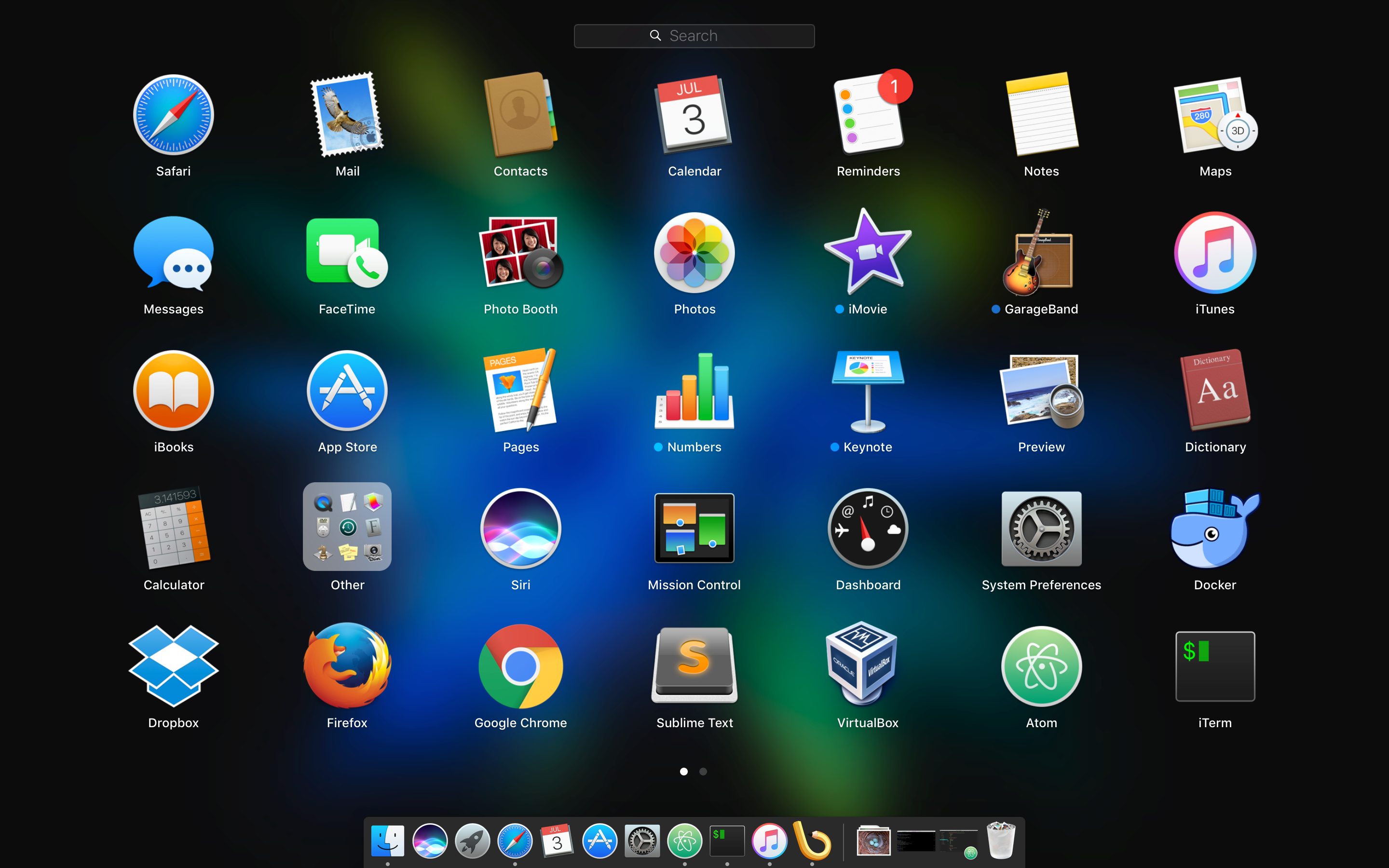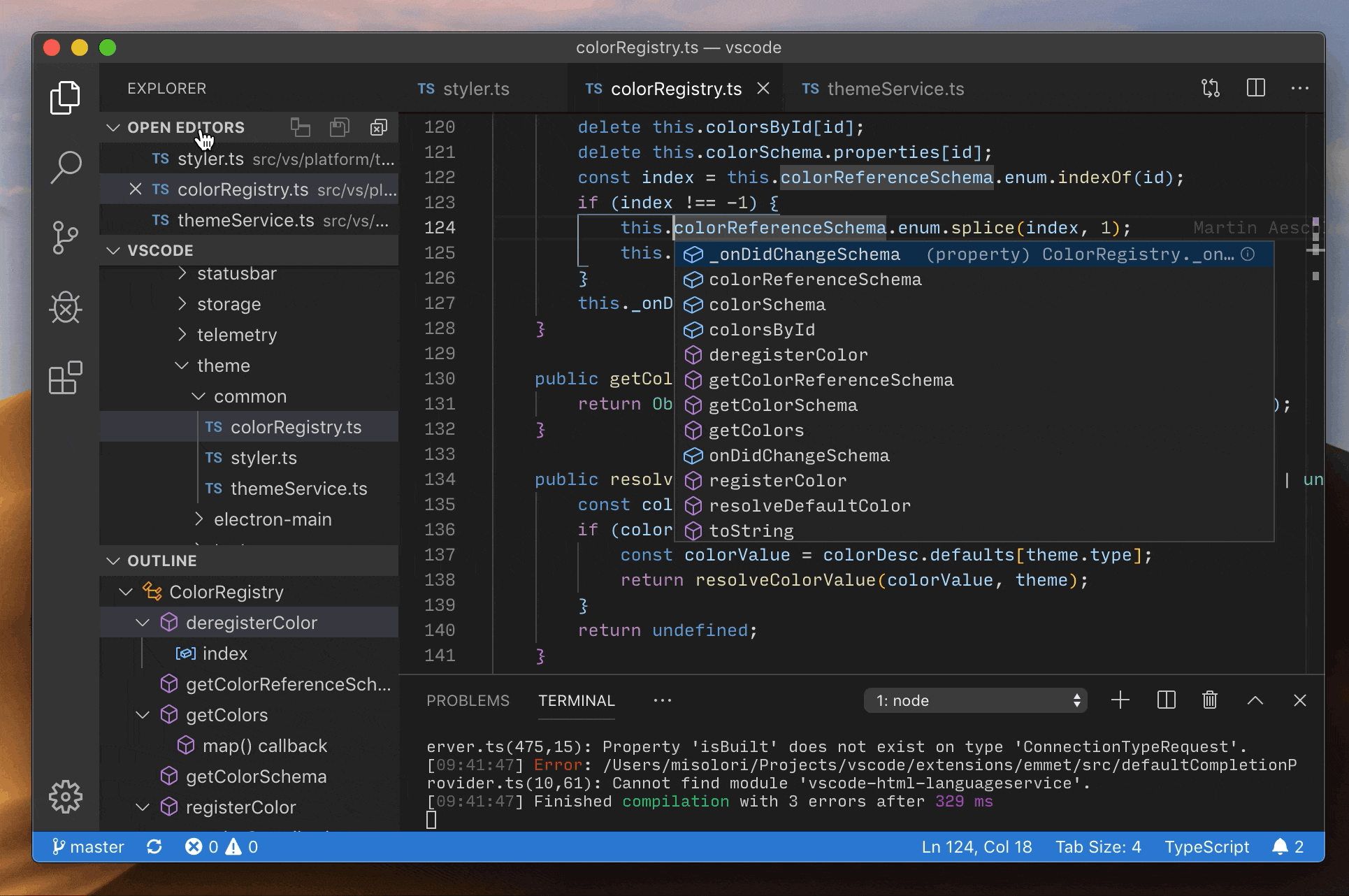The Ansible community uses a range of tools for working with the Ansible project. This is a list of some of the most popular of these tools.
If you know of any other tools that should be added, this list can be updated by clicking “Edit on GitHub” on the top right of this page.
An open-source, free GUI text editor created and maintained by GitHub. You can keep track of git projectchanges, commit from the GUI, and see what branch you are on. You can customize the themes for different colors and install syntax highlighting packages for different languages. You can install Atom on Linux, macOS and Windows. Useful Atom plugins include:
EDITOR=code ansible-vault edit test.txt It is expected that code opens with the decrypted content in the editor. After saving ansible-vault should decrypt the (changed) buffer. Works much like editing a git commit message. In order to connect Visual Studio Code with Ansible, we still need an extension. Extensions for Visual Studio Code can be found under the button “Extensions” on the left menu bar. Here you can install the extensions, find information about them or delete them if necessary. Simply select the. The Remote - WSL extension enables you to run Visual Studio Code within the Windows Subsystem for Linux (WSL). Install the Remote - WSL extension. Prerequisite check. With the Remote - WSL extension installed, you will see a new Status bar item at the far left. Ansible Role: Visual Studio Code Role to install the Visual Studio Code IDE / text editor.
language-yaml - YAML highlighting for Atom (built-in).
linter-js-yaml - parses your YAML files in Atom through js-yaml.
A free, open-source text editor and IDE that supports auto-indentation, syntax highlighting and built in terminal shell(among other things).
yaml-mode - YAML highlighting and syntax checking.
jinja2-mode - Jinja2 highlighting and syntax checking.
magit-mode - Git porcelain within Emacs.
A full IDE (integrated development environment) for Python software development. It ships with everything you need to write python scripts and complete software, including support for YAML syntax highlighting. It’s a little overkill for writing roles/playbooks, but it can be a very useful tool if you write modules and submit code for Ansible. Can be used to debug the Ansible engine.


A closed-source, subscription GUI text editor. You can customize the GUI with themes and install packages for language highlighting and other refinements. You can install Sublime on Linux, macOS and Windows. Useful Sublime plugins include:
GitGutter - shows information about files in a git repository.
SideBarEnhancements - provides enhancements to the operations on Sidebar of Files and Folders.
Sublime Linter - a code-linting framework for Sublime Text 3.
Pretty YAML - prettifies YAML for Sublime Text 2 and 3.
Yamllint - a Sublime wrapper around yamllint.
An open-source, free GUI text editor created and maintained by Microsoft. Useful Visual Studio Code plugins include:
YAML Support by Red Hat - provides YAML support through yaml-language-server with built-in Kubernetes and Kedge syntax support.
Ansible Syntax Highlighting Extension - YAML & Jinja2 support.
Visual Studio Code extension for Ansible - provides autocompletion, syntax highlighting.
An open-source, free command-line text editor. Useful vim plugins include:

Ansible vim - vim syntax plugin for Ansible 2.x, it supports YAML playbooks, Jinja2 templates, and Ansible’s hosts files.
An open-source Community edition and closed-source Enterprise edition, integrated development environments based on IntelliJ’s framework including IDEA, AppCode, CLion, GoLand, PhpStorm, PyCharm and others. Useful JetBrains platform plugins include:

Ansible Vault Editor - Ansible Vault Editor with auto encryption/decryption.
There are various ways to find existing issues and pull requests (PRs)

PR by File - shows a current list of all open pull requests by individual file. An essential tool for Ansible module maintainers.
jctanner’s Ansible Tools - miscellaneous collection of useful helper scripts for Ansible development.
Visual Studio Code Ansible Online
Ansible Lint - a highly configurable linter for Ansible playbooks.
Ansible Review - an extension of Ansible Lint designed for code review.
Molecule is a testing framework for Ansible plays and roles.
yamllint is a command-line utility to check syntax validity including key repetition and indentation issues.
Ansible cmdb - takes the output of Ansible’s fact gathering and converts it into a static HTML overview page containing system configuration information.
Ansible Inventory Grapher - visually displays inventory inheritance hierarchies and at what level a variable is defined in inventory.
Ansible Playbook Grapher - A command line tool to create a graph representing your Ansible playbook tasks and roles.
Ansible Shell - an interactive shell for Ansible with built-in tab completion for all the modules.
Ansible Silo - a self-contained Ansible environment by Docker.
Ansigenome - a command line tool designed to help you manage your Ansible roles.
ARA - records Ansible playbook runs and makes the recorded data available and intuitive for users and systems by integrating with Ansible as a callback plugin.
Awesome Ansible - a collaboratively curated list of awesome Ansible resources.
AWX - provides a web-based user interface, REST API, and task engine built on top of Ansible. AWX is the upstream project for Red Hat Ansible Tower, part of the Red Hat Ansible Automation subscription.
Mitogen for Ansible - uses the Mitogen library to execute Ansible playbooks in a more efficient way (decreases the execution time).
nanvault - a standalone tool to encrypt and decrypt files in the Ansible Vault format, featuring UNIX-style composability.
OpsTools-ansible - uses Ansible to configure an environment that provides the support of OpsTools, namely centralized logging and analysis, availability monitoring, and performance monitoring.
TD4A - a template designer for automation. TD4A is a visual design aid for building and testing jinja2 templates. It will combine data in yaml format with a jinja2 template and render the output.
PHP-Ansible - an object oriented Ansible wrapper for PHP.
- Categories:azure,devops
- #ansible,#Docker
- 3 minutes read
Last year I was working on a project for deploying Azure services using Ansible, and let me tell you something: Back then a feature like Visual Studio Remote Containers would have helped us so much!
Vscode Ansible Lint
Why? Because just installing Visual Studio Code, the Remote Development Extension Pack, and Docker you have a killer combo that makes it possible to create a Development environment in a snap and share it with your source code.
When I learned about this feature I tought I should create a Developer Container for those who need to work with Azure and Ansible so I went hands on and after collaborating with Chuck Lantz the container definition resulted in the following two files:
1. devcontainer.json
This file configures the remote container with the specified extensions
2. Dockerfile
Visual Studio Code Ansible
This is the Dockerfile with all the tooling for the Development environment.
To learn more about the Azure Ansible Remote Container please check here.
If you want to use Developer Conatianers with WSL 2 start here
Vscode Ansible
Hope it helps!
